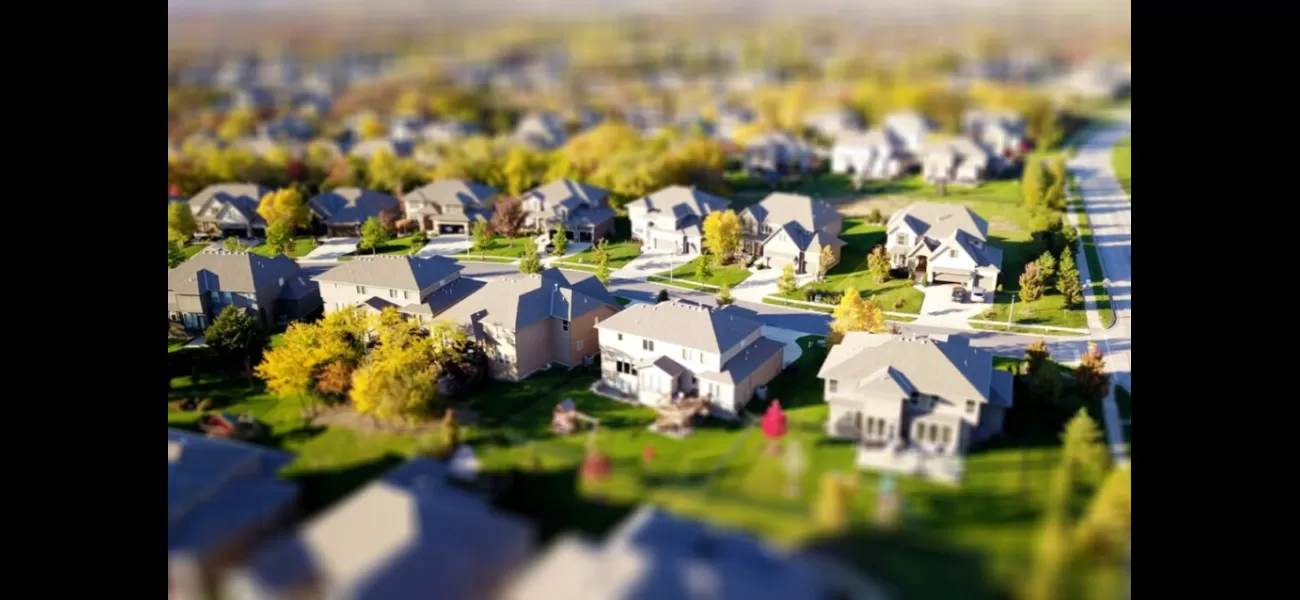Some people believe that the "White Fortresses" in Georgia and Louisiana continue racial segregation in the modern era.
Building "white fortresses" in Louisiana and Georgia is a worrisome trend that unfairly targets minorities.
June 5th 2024.

Recently, there has been a lot of attention on the Louisiana Supreme Court's decision to allow for the creation of a new, predominantly white city outside of East Baton Rouge Parish. This has sparked a larger discussion about the increasing number of what are being called "white fortresses" in both Louisiana and Georgia.
One of the most notable examples is the new city of St. George, Louisiana, which is expected to have a population of 100,000 people and a black population of only 12%. This is a stark contrast to the 47.2% black population in East Baton Rouge Parish. The creation of St. George has been seen by many as a form of modern-day segregation, as it essentially separates a wealthier, predominantly white community from a predominantly black community.
One of the major concerns surrounding the creation of St. George is the impact it will have on the tax revenue for East Baton Rouge Parish. It is estimated that the new city will divert $48.3 million in annual tax revenue, which accounts for nearly 8% of the parish's total tax revenue. This highlights the concept of "white fortressing," where these newly formed, affluent communities are able to further their advantages by limiting resources for the underrepresented areas they leave behind. This includes things like public school funding, access to local revenue, and zoning control.
However, those in support of St. George's formation argue that it is a long time coming for residents who feel like they have not received a fair return on the taxes they have contributed to East Baton Rouge Parish. According to St. George's website, the taxpayers in this area provide two-thirds of the revenue to the parish government, but only receive one-third of the government's expenses in return. The creation of St. George would help to reverse this "unjust circumstance" to some extent.
A similar trend has been seen in Georgia, where 11 new predominantly white communities have been formed around Metro Atlanta since 2005. These moves appear to be in response to the majority-black/nonwhite counties in the city. Just last month, a vote was held to approve the formation of Mulberry, a wealthy, majority-white community in Gwinnett County. This highlights the fact that these new, affluent communities tend to have little to no input from the underrepresented communities they break away from. In both Louisiana and Georgia, only citizens within the proposed new city are able to vote on its formation, despite the impact it will have on the surrounding community's taxes.
This phenomenon of "white fortressing" speaks to modern-day forms of white flight that have been shaping American cities for decades. It is a result of desegregation in a post-slavery America that is still plagued by racism. The consequences of these practices are far-reaching, as they often negatively impact underserved communities and limit their access to resources and opportunities for generations.
While the city of St. George acknowledges the potential loss in funding for East Baton Rouge Parish, opponents of white fortressing are calling for greater transparency about the impact it will have on disenfranchised communities. They argue that this form of opportunity hoarding only worsens modern-day segregation and perpetuates existing racial and socioeconomic inequities.
In the end, the creation of these "white fortresses" highlights the need for continued efforts towards true equality and social justice. It is important to address the root causes of these disparities and work towards creating a more fair and inclusive society for all.
One of the most notable examples is the new city of St. George, Louisiana, which is expected to have a population of 100,000 people and a black population of only 12%. This is a stark contrast to the 47.2% black population in East Baton Rouge Parish. The creation of St. George has been seen by many as a form of modern-day segregation, as it essentially separates a wealthier, predominantly white community from a predominantly black community.
One of the major concerns surrounding the creation of St. George is the impact it will have on the tax revenue for East Baton Rouge Parish. It is estimated that the new city will divert $48.3 million in annual tax revenue, which accounts for nearly 8% of the parish's total tax revenue. This highlights the concept of "white fortressing," where these newly formed, affluent communities are able to further their advantages by limiting resources for the underrepresented areas they leave behind. This includes things like public school funding, access to local revenue, and zoning control.
However, those in support of St. George's formation argue that it is a long time coming for residents who feel like they have not received a fair return on the taxes they have contributed to East Baton Rouge Parish. According to St. George's website, the taxpayers in this area provide two-thirds of the revenue to the parish government, but only receive one-third of the government's expenses in return. The creation of St. George would help to reverse this "unjust circumstance" to some extent.
A similar trend has been seen in Georgia, where 11 new predominantly white communities have been formed around Metro Atlanta since 2005. These moves appear to be in response to the majority-black/nonwhite counties in the city. Just last month, a vote was held to approve the formation of Mulberry, a wealthy, majority-white community in Gwinnett County. This highlights the fact that these new, affluent communities tend to have little to no input from the underrepresented communities they break away from. In both Louisiana and Georgia, only citizens within the proposed new city are able to vote on its formation, despite the impact it will have on the surrounding community's taxes.
This phenomenon of "white fortressing" speaks to modern-day forms of white flight that have been shaping American cities for decades. It is a result of desegregation in a post-slavery America that is still plagued by racism. The consequences of these practices are far-reaching, as they often negatively impact underserved communities and limit their access to resources and opportunities for generations.
While the city of St. George acknowledges the potential loss in funding for East Baton Rouge Parish, opponents of white fortressing are calling for greater transparency about the impact it will have on disenfranchised communities. They argue that this form of opportunity hoarding only worsens modern-day segregation and perpetuates existing racial and socioeconomic inequities.
In the end, the creation of these "white fortresses" highlights the need for continued efforts towards true equality and social justice. It is important to address the root causes of these disparities and work towards creating a more fair and inclusive society for all.
[This article has been trending online recently and has been generated with AI. Your feed is customized.]
[Generative AI is experimental.]
0
0
Submit Comment





